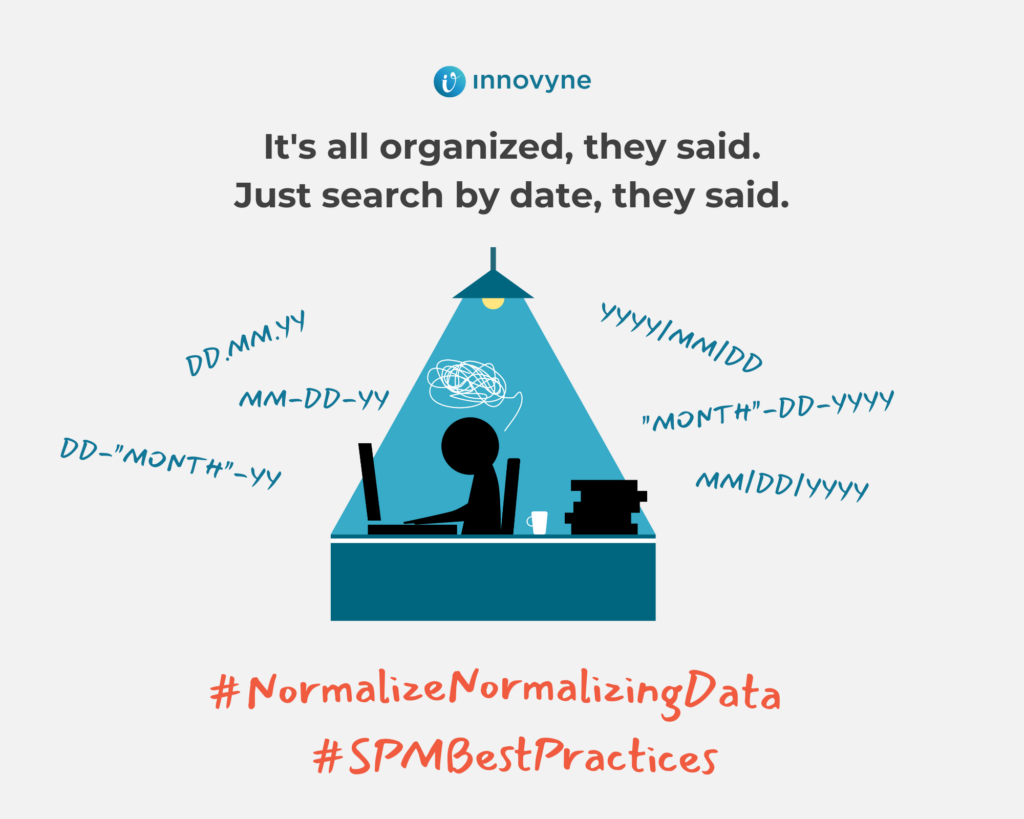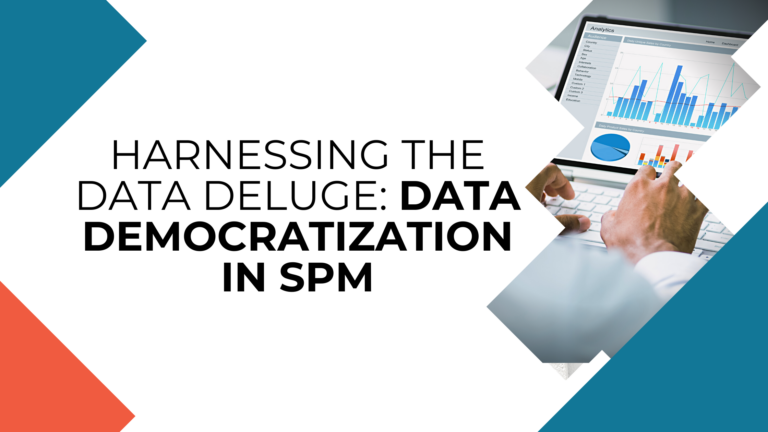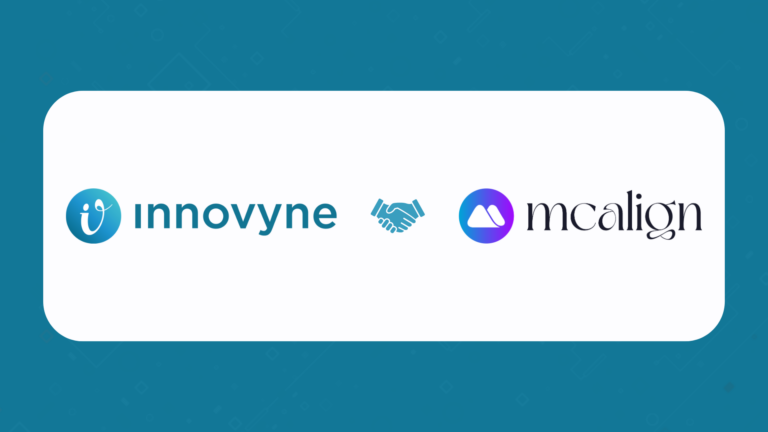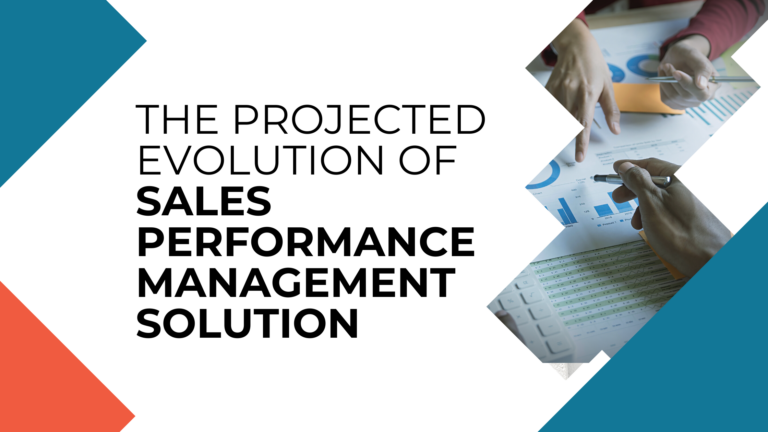There was a time, not so long ago, when businesses had to exert real effort to mine for data. Today, we are awash in a sea of it. Every transaction, every customer interaction, every operational process… generates streams of valuable information. This influx of data holds immense potential to unlock insights that could reshape the business landscape. In fact, because of this expectation we’re witnessing a fast trend towards the democratization of data. However, the sheer volume of available information presents a new set of challenges: how do we make sense of it all and what will it mean for our operations?
As we navigate through this rapidly changing space, particularly as it regards Sales Performance Management (SPM), this shift towards more accessible, shared data heralds a new era of collaboration and efficiency. This article delves into what data democratization means for SPM, exploring its impact on various departments, and shedding light on both its perks and potential pitfalls. Stay with us as we unpack the nuances of this seismic shift.
But first…
What is Data Democratization Anyways?
In business, data democratization refers to the practice of making digital data accessible to the average non-specialist user, without requiring them to have advanced IT skills or any narrow training in data analysis. This concept is grounded in the belief that everyone in an organization can make more informed decisions if they have access to relevant information. After all, data holds knowledge, and that is power.
This shift is perpetuated by a number of different factors. Most obvious, of course, is the explosion in data availability coupled with user-friendly business intelligence tools for analyzing said data. The ease with which information is now available has contributed to a cultural shift that places more emphasis on transparency and collaboration. Additionally, cloud computing has made it easier and more cost effective for businesses to store larger amounts of data than ever before. Finally, advancements in machine learning and AI are making it possible to automate complex data analysis tasks with ever increasing speed and accuracy.
All told, the pressure for data democratization is certainly felt from many different facets of business. And while there are certainly dangers associated with big sweeping changes, the promise it holds in unlocking potential and providing a competitive edge appears to be outweighing the concerns.
Then and Now: What Does Data Democratization Mean in SPM?
To explain how things are changing in SPM, let’s first look at how data has been managed thus far.
Many proven SPM solutions (including Varicent Incentives) follow an order of operations that can be summarized as an ETL method, or Extract, Transform, Load. First, data is exported from multiple sources like your Point-of-Sale software, ERP, CRM, etc. and stored on an interim or staging server. The data then undergoes transformation or clean-up so that it can be properly integrated into the broader business. From there, the now structured data is loaded into the business system, allowing you to perform essential operations like calculating remuneration, analyzing performance, and more.
Does the following hit a little too close to home? This is why properly structured data is so important.

Weaknesses of ETL
The ETL method of handling data includes tried-and-true processes that safeguard your business from data leaks, inaccurate information, and more. In fact, it has delivered consistent and reliable results for many critical SPM functions. However, it isn’t without weaknesses:
1.Time Consuming: The transformation phase requires significant time, which delays data availability.
2.Resource Intensive: It requires considerable processing power, hardware, and IT support.
3.Inflexibility: Because of its sequential nature, making changes during the transformation phase often adds significant complexity.
4.Barrier to Analysis: Data loses its impact and utility the longer it takes to reach the decision-making table, so a time-consuming extraction and transformation process can render some business processes less effective.
Latest in SPM: A New Approach to Data Management
Another method in data handling rearranges the traditional order of operations, particularly in how the transformation phase is executed. The process still begins with the extraction of raw data from various external sources. However, this new approach, known as ELT (Extract, Load, Transform), diverges from the norm by directly loading the raw data into the data warehouse, prior to any transformation. This change allows businesses to capitalize on the robust processing capabilities of modern data warehouses, facilitating a more flexible and dynamic approach to data manipulation. Transformations can now occur as required, in response to the ever-changing needs of the business.
This method markedly reduces reliance on extra hardware and technical resources typically needed for data transformation. This not only accelerates processing time but also streamlines the entire data pipeline.
Note: While some SPM solutions have already implemented this approach, for many, including Varicent, ELT represents an entirely new direction.
The Advantages of ELT in SPM Data Integration
A shift from ETL to ELT brings forth a host of implications and benefits. We’ve mentioned already that this approach enhances efficiency by reducing processing time and offering greater flexibility. But, what about the implications for various departments and business processes?
1.Enhanced Real-Time Data Access for Sales Teams: Sales teams benefit from ELT’s capability for real-time data analysis. Immediate access to the latest data allows sales personnel to rapidly adjust strategies, respond to market changes, and capitalize on emerging opportunities.
2.Improved Financial Planning and Analysis for Finance Departments: Finance gains from ELT through more timely and accurate financial reporting. The ability to quickly consolidate and analyze financial data aids in budgeting, forecasting, and overall financial planning, enabling more strategic financial decision-making.
3.Streamlined Operations and Strategic Insights for Marketing: For marketing, ELT means having up-to-date customer and market data at their fingertips. This accessibility allows for more effective campaign planning, audience targeting, and ROI analysis, leading to more impactful marketing strategies.
4.Better Resource Management for IT: For IT, the benefit of ELT is that there is less demand on their time. With data being more accessible and manageable without an interim server that they have previously needed to set up, they can now focus on their backlog of other projects.
5.Enhanced Collaboration Across Departments: ELT fosters a more collaborative environment across departments. With easier access to consistent and up-to-date data, teams can work together more effectively, breaking down silos and driving cohesive business strategies.
In summary, the data democratization afforded by ELT has the potential to significantly enhance the capabilities and efficiency of many business operations, both directly and indirectly related to SPM.
However, as we’ve alluded to earlier, this type of change isn’t without risks and challenges. Let’s take a look at some potential pitfalls of adopting ELT.
The Risks and Pitfalls of ELT in SPM
1.Data Security and Privacy Concerns : Perhaps the most glaring concern that needs to be addressed when adopting ELT is how, exactly, the raw data will become processed and by whom. Given that with ELT, the raw data is sent directly to the data warehouse before undergoing the transformation phase, you will want to set up processes to ensure that that sensitive information is kept safe and that other safety measures are in place before incomplete or incorrect data gets used in any business processes.
2.Change Management Challenges : As with any major adoption in a complex organization, change management is something that can make or break all affected systems. In addition to the security concerns raised above, the integration of ELT will require updating many workflows to ensure that essential operations continue without error or interruption.
3.Skillset and Training Requirements: Given that all data enters the data warehouse in its raw form, you may need to develop and provide specific training in data management and analysis to ensure that it is ultimately handled correctly.
Embracing the Future: Data Democratization in SPM
In conclusion, the journey towards data democratization in SPM represents a significant stride towards harnessing the full potential of data. This shift not only enhances efficiency and agility of data processing, but it also opens the door to greater interdepartmental collaboration, improved transparency, and more informed decision-making. For many businesses, adopting a solution like Varicent ELT will help to unlock a realm where data becomes a shared asset, fostering a stronger environment of progress and innovation.
However, this transition is not without its challenges. Addressing concerns about data security, change management, and skillset adaptation will be crucial for smooth integration. Most notably, having a balanced approach that weighs both the transformative potential and the inherent challenges will be the key to success.
As with all things in business, the landscape of Sales Performance Management is poised for continuous evolution. Staying informed and adaptable is crucial for leveraging change to your strategic advantage. By preparing to navigate the complexities brought on by data democratization, you are not only adapting to the future but actively working to shape it. If you might be interested in exploring whether Varicent ELT is right for your business, InnoVyne can be invaluable partner. We support businesses through all stages of their SPM journey, ensuring that you not only keep pace with modern advancements but are fully prepared to capitalize on them for broader organizational alignment and growth.
Schedule a free consultation to help ensure that your business data becomes a powerful asset for your success.



